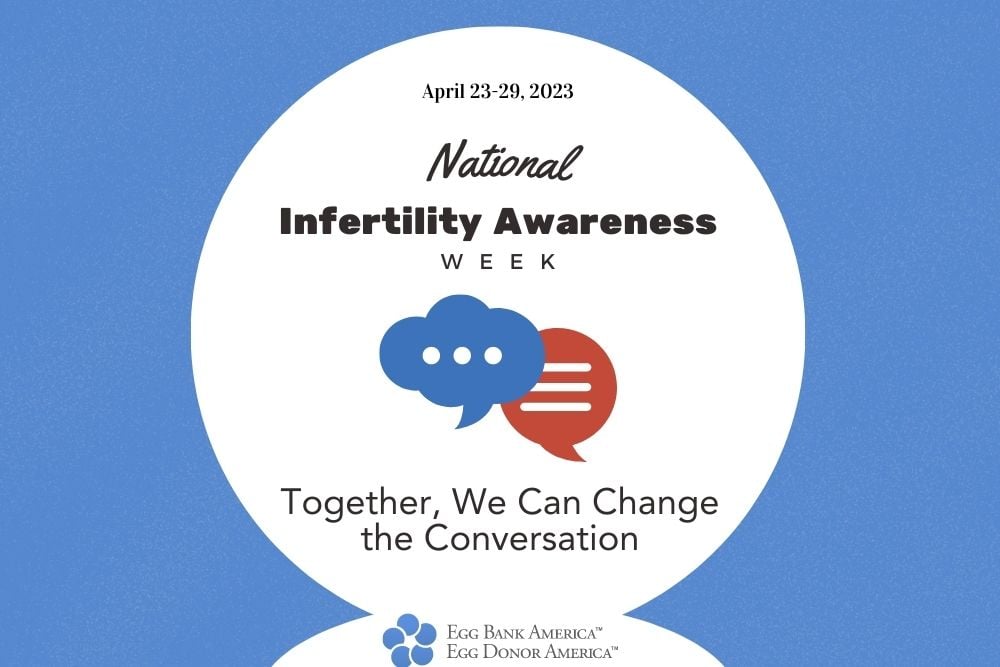National Infertility Week: Together, We Can Change the Conversation

There are many common myths surrounding the topic of infertility, such as that infertility primarily impacts older females. Egg Donor America knows that by bringing our voices together during National Infertility Awareness Week (NIAW), we can help change the conversation to advocate for ourselves, friends, and/or family members with infertility and those needing assisted reproductive treatment (ART). Here are some common myths, and how to respond to these misperceptions.
Myth #1: People having trouble conceiving just need to relax.
The Truth: Although chronic stress can contribute to infertility, infertility is a medical condition of the reproductive system; it is not usually a psychological problem.
Myth #2: Couples who are infertile are doing something wrong.
The Truth: Infertility can be caused by a variety of factors, including blocked fallopian tubes, low ovarian reserve, low sperm count, or abnormal shape or movement of sperm. Certain chronic physical conditions can also cause or contribute to infertility.
Myth #3: Infertility is exclusively a female problem.
The Truth: Infertility impacts males as well as females. Studies show that male infertility accounts for approximately half of all infertility cases.
Myth #4: It is impossible to have children with infertility.
The Truth: Many couples experience infertility after a successful conception, pregnancy, and birth. Secondary infertility (i.e., the inability to conceive after a child is born) is as common as primary infertility (the inability to conceive the first baby), impacting approximately 11% of the population, according to Cleveland Clinic.
Myth #5: Fertility treatments are too expensive for most people.
The Truth: Medical therapy – such as medications or medical procedures – is the treatment of choice in 85 to 90% of infertility cases. It is not always necessary to use expensive ART measures, according to the National Institutes of Health (NIH). You may only require a simple procedure or medication.
Myth #6: It is impossible to get pregnant after 35 years of age.
The Truth: In spite of the fact that the peak reproductive years are between the late teens and late 20s, it is not uncommon for healthy babies to be born to parents later in life. Approximately one in six women over 35 in the U.S. have infertility problems, according to the CDC, so many women in their mid-thirties will have no trouble getting pregnant.
Share This Blog
Egg Donor America encourages education on infertility causes and treatment (such as in-vitro fertilization (IVF), surrogacy, egg donation, and other ART modalities). Once you’ve learned to discern myths from the facts about infertility, keep the conversation going by sharing this blog. For questions about egg donation, don’t hesitate to contact us today.